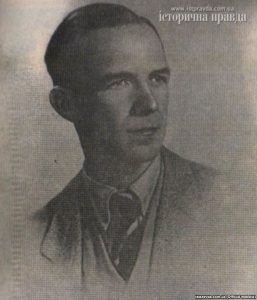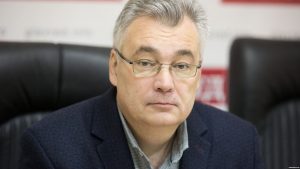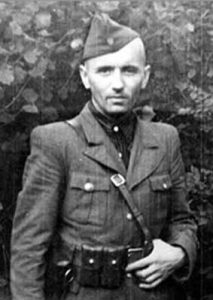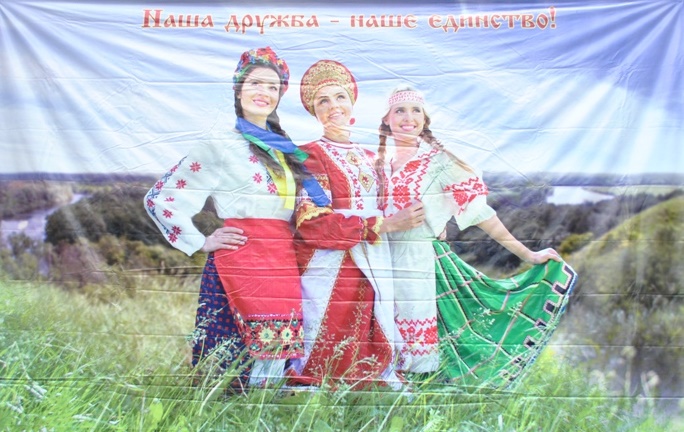
- The Organization of Ukrainian Nationalists (OUN) operated actively in the Donbas. Tell us more about that.
Alina Ponypaliak: The Donbas has always been Ukrainian. In the 1940s, the OUN moved into the Donbas. There were people from Central Ukraine and local residents. When the Soviet Union took over Western Ukraine, many Donbas locals were serving in the army there, were in contact with the partisans and became enthusiastic about OUN ideals. After all, the OUN and UPA were very powerful in that part of the country.
After returning home to Donetsk (then called Stalino) and Luhansk (then called Voroshylovhrad), they tried to build a similar organization in their region and attract as many young, educated people as possible.
- And how did the locals react to this movement? How did it grow and develop in the Donbas?

Alina Ponypaliak: The OUN would have never been so popular and successful if it hadn’t been supported by the local population.
One of the first men to lead this movement was Volodymyr Bolharsky, a resident of Stalino. The Second World War was the point of no return in Ukraine. Most Ukrainians believed that the Soviet Union would no longer return to their regions and that an independent Ukraine would be born.
Many Donbas locals were severely persecuted during the Stalinist repressions. Those who remembered the liberation struggles of the 1920s supported the Organization of Ukrainian Nationalists. Both factions - OUN-Banderivtsi and OUN-Melnykivtsi – worked together against the common enemy.
- When was the movement actually launched?
Alina Ponypaliak: If we refer to the entire territory of the Donbas, then it would be 1940, when the first Ukrainian associations and communities appeared in Donetsk. But, the date is different for each city.
One of the leaders in the southern and eastern regions was the last commander of the Ukrainian Insurgent Army (UPA) Vasyl Kuk. He ordered that each city in the 35 Donbas districts should have its own separate organization, and that each village and town should have its own organized unit. Of the 35 districts, 18 were subordinate to the OUN. It was a very powerful and extensive network.
In 1943, the Germans tried to destroy the OUN. We know that 100 people were executed in Donetsk. The Germans understood very well that these people were fighting against the Soviet and Nazi systems.
- The city of Krasnodon, now Sorokyne, Luhansk Oblast, was controlled by the Young Guard (“Молода гвардія”)*. This is a very important moment in history. As far as we know, underground movements worked closely together during World War 2. Can you tell us about it? We also know that Yevhen Stakhiv, leader of an OUN unit, was one of the heroes described in “The Young Guard”, a novel written by Oleksandr Fadeyev.
(*The Young Guard was an underground anti-fascist Komsomol organization, in the German-occupied city of Krasnodon. They were active during WW2 until January 1943. They carried out several acts of sabotage and protest before being destroyed by German forces. Most members of the Young Guard, about 80 people, were tortured and then executed by the Germans-Ed.)
Alina Ponypaliak:
Yevhen Stakhiv was the OUN leader in the Donbas. He said that when he first read “The Young Guard”, he nearly fell off his chair because he recognized himself in the main protagonist. Fadeyev tried to describe everything as it really was, but twisted the facts to suit Soviet propaganda.
In fact, this is just one big myth! “The Young Guard” had no support among the population. But, the OUN and the communist party didn’t fight each other because they understood that they were engaged in a common cause - fighting the Nazis.
This exaggeration and popularization of the Young Guard was the main goal of the Soviet propaganda system in order to show that Donbas had always been pro-Soviet.
As for Yevhen Stakhiv, he is a legendary person, a great leader who knew how to charm and attract people. He was from Halychyna in Western Ukraine. He arrived in the Donbas in 1941 together with the Puma group, which was dispatched from Western to Eastern Ukraine.

These young OUN members were often betrayed by the locals, not because they were anti-Ukrainian, but basically for money. All the secret OUN apartments were regularly raided and destroyed.
If we look at the partisan war that the OUN and the UPA waged in Western Ukraine, then we see that it took place in forests, hills and favourable natural terrain where it was possible to find shelter and build kryyivkas*, whereas in the Donbas, the soldiers had to fight in open steppes and slag heaps. Therefore, the war was waged in the cities, and this meant using completely different tactics and strategies. Members met in secret apartments, where they read books, listened to lectures and talked about politics.
(*Kryyivka – underground shelter especially developed in the forests of Western Ukraine-Ed.)
- Recently, historian Dmytro Sniehyriov launched an initiative to grant Yevhen Stakhiv the title of Hero of Ukraine. Mr. Sniehyriov, tell us more about your initiative. Why do you think that Yevhen Stakhiv should be awarded this
title?

Dmytro Sniehyriov: The initiative was launched some ten years ago. I have repeatedly addressed our demand - conferring the title of Hero of Ukraine to Yevhen Stakhiv - to the responsible authorities in Kyiv.
This initiative is political. It was initiated because the Soviet regime artificially imposed the idea that the Donbas was staunchly “Red” and that communist ideology was dominant, and historians and politicians naturally followed this line.
By awarding the title of Hero of Ukraine to a Ukrainian resistance fighter, we would destroy these stereotypes and would show that during the Second World War there was a powerful pro-Ukrainian movement in the Donbas, which fought for Ukraine under the slogan “Down with Stalin! Down with Hitler!”
Many Ukrainians still believe that the partisan movement and bunkers existed only in Western Ukraine. But, the last OUN bunker was revealed in the autumn of 1950 near Horlivka, Donetsk Oblast. Large caches of weapons, ammunition and propaganda material were discovered.
(In mid-1948, OUN activist Vasyl Pidhorodetsky was sent to Eastern Ukraine to spread underground propaganda material, namely to explain the OUN movement to the locals - who they are and what they want. Throughout the year, Pidhoretsky and his comrades lived in mines in Moldova, then travelled to Khmelnytsky Oblast, and later moved on to Luhansk, and in 1952 - to Donetsk. When the NKVD learned that the OUN was spreading its activities in Donetsk Oblast, they began actively searching, arresting and destroying its members-Ed.)
In 1953, a group of OUN-banderivtsi led by Vasyl Pidhorodetsky was arrested in Donetsk Oblast.
In 1955, the NKVD arrested members of the Organization of Ukrainian Nationalists in Horlivka.
The last Ukrainian resistance fighter was arrested in today’s Toretsk in 1958.
These historical facts clearly show that the Soviet authorities wanted to spread an artificial myth about the non-existence of a Ukrainian underground movement in the Donbas. There were several strong and patriotic local groups that grew and flourished until the late 1950s. They were NOT destroyed by the NKVD in the 1940s, as the Soviet authorities maintained.
Alina Ponypaliak: Vasyl Kuk, who was the last leader of the Ukrainian Insurgent Army (UPA) following the death of Roman Shukhevych, named Yevhen Stakhiv as head of the OUN in the Donbas. The OUN headquarters were in the city of Dnipro.

Stakhiv was responsible for the eastern territories. His mission was extremely important. The OUN published their own literature and newspapers. Of the twelve newspapers circulating in Eastern Ukraine, eight were controlled by the OUN.
Finally, many young people joined the ranks of the OUN as they saw that there was no real future in the Soviet Union.
OUN (Organization of Ukrainian Nationalists) was a political organization created in 1929 by Yevhen Konovalets and other leaders, operating mostly in Western Ukraine. OUN members sought to infiltrate political parties, universities and other political structures and institutions. OUN’s strategy to achieve Ukrainian independence included guerilla warfare and violent attacks against foreign and domestic enemies, particularly Poland and Russia. OUN’s goals were to protect the Ukrainian population from repression, drive out the occupying powers, and set up a government representing all regions and Ukrainian social groups.
UPA (Ukrainian Insurgent Army) was a nationalist partisan formation that engaged in a series of guerrilla warfare during WW2 against Nazi Germany, the Soviet Union and Poland. The insurgent army arose out of separate militant formations of the OUN, other militant national-patriotic formations and mobilization of the local population. Political leadership belonged to the Stepan Bandera faction. Stepan Bandera (1909-1959) was murdered in Munich by KGB assassin Bohdan Stashynsky, who acted on the orders of Soviet KGB head Aleksandr Shelepin and Soviet premier Nikita Khrushchev.





